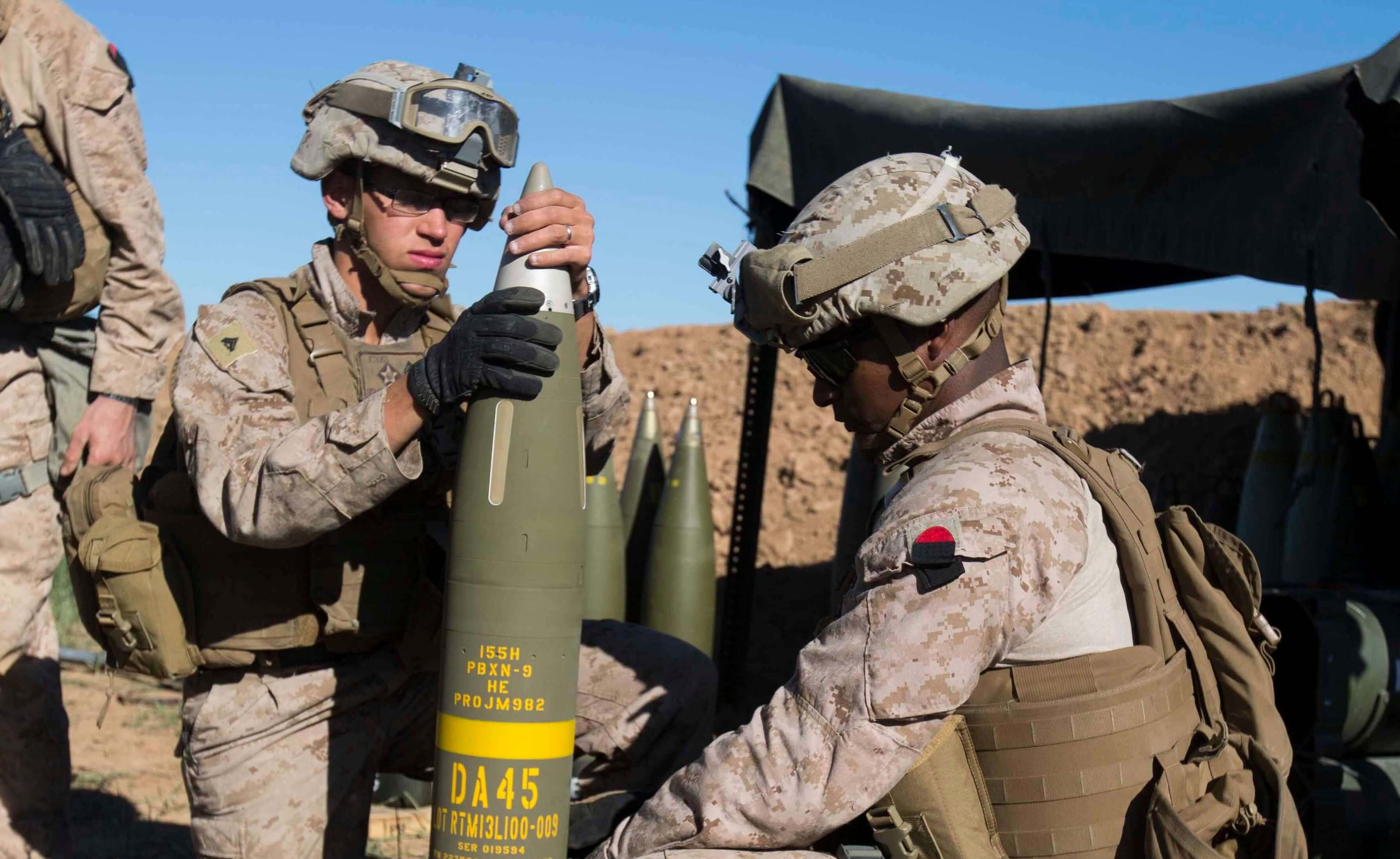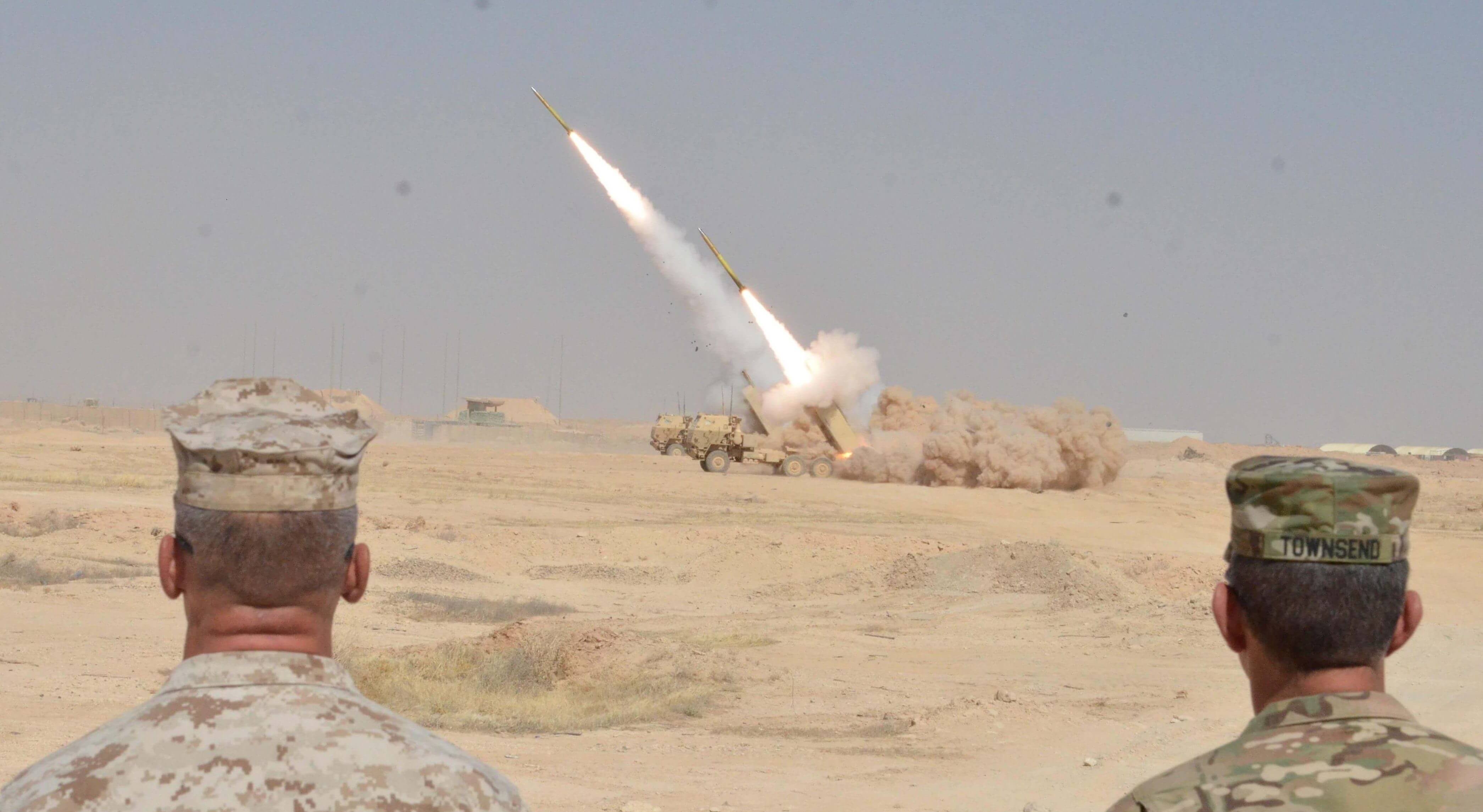Watch: Remnants of ISIS Get No Mercy from Coalition Artillery
The so-called Islamic State group is a shadow of its former self.
The extremists once boasted about the size and strength of their caliphate, with some purportedly claiming it was to span from the Iberian Peninsula to India.
Now, after years of war, Kurdish, Turkish and Syrian forces have beaten them back to a few strongholds.
On top of the existential threat on the front lines, they are in range of coalition artillery. The resulting fireworks make for a good video.
Combined Joint Task Force-Operation Inherent Resolve is the U.S.-led coalition of nations working to defeat the Islamic State with the motto “One Mission, Many Nations.” Members include Canada, Saudi Arabia and Greece.
Formed in 2014, the multinational task force has worked to eliminate the Islamic State with great success.
The coalition’s stated mission is to “defeat ISIS as a military force on the battlefield in Iraq and Syria,” and it has used air strikes and artillery to thoroughly decimate the terrorists.

Coalition officials put the number of Islamic State fighters killed at 80,000. This is a larger casualty count than the Taliban suffered in the U.S. war in Afghanistan.
That number is virtually guaranteed to go up as the artillery campaign continues to pound Islamic State positions.
Weekly summaries put together by the coalition give insight into the type of operation the Islamic State is facing. “Between September 10 and September 16, Coalition military forces conducted 66 strikes consisting of 102 engagements in Iraq and Syria,” the most recent strike report reads.
One example in the document shows exactly the kind of devastation the coalition is bringing to the terrorist group.
“Near Abu Kamal, 14 strikes engaged six ISIS tactical units and destroyed one ISIS vehicle, three ISIS supply routes, one ISIS mortar tube, two ISIS defensive fighting structures, three ISIS fighting positions and one ISIS staging area, and suppressed one mortar team,” one strike summary reads.
Another one celebrates the destruction of “one ISIS mortar tube, one ISIS weapons cache and one ISIS heavy machine gun,” as well as some IED belts.
For a failing caliphate, every bit counts. It’s not tough to see that mortar tubes, vehicles, and lives add up. With their drastic loss of territory, revenue streams have dried up as well.

Many think that the terrorist group was funded primarily through oil money, but this is only partially true.
The Islamic State once styled itself as a fully functioning government and levied taxes across the territories under its control. Taxes, not hostage ransoms or oil money, was the primary income source for the group.
Now that the Islamic State has lost its city strongholds and massive tax base, there is no hope. The terrorists are holed up in the mountains facing a constant barrage of coalition strikes, and have only two possible futures: surrender or death.
It won’t be long until the caliphate is gone once and for all.
Truth and Accuracy
We are committed to truth and accuracy in all of our journalism. Read our editorial standards.
Advertise with The Western Journal and reach millions of highly engaged readers, while supporting our work. Advertise Today.












